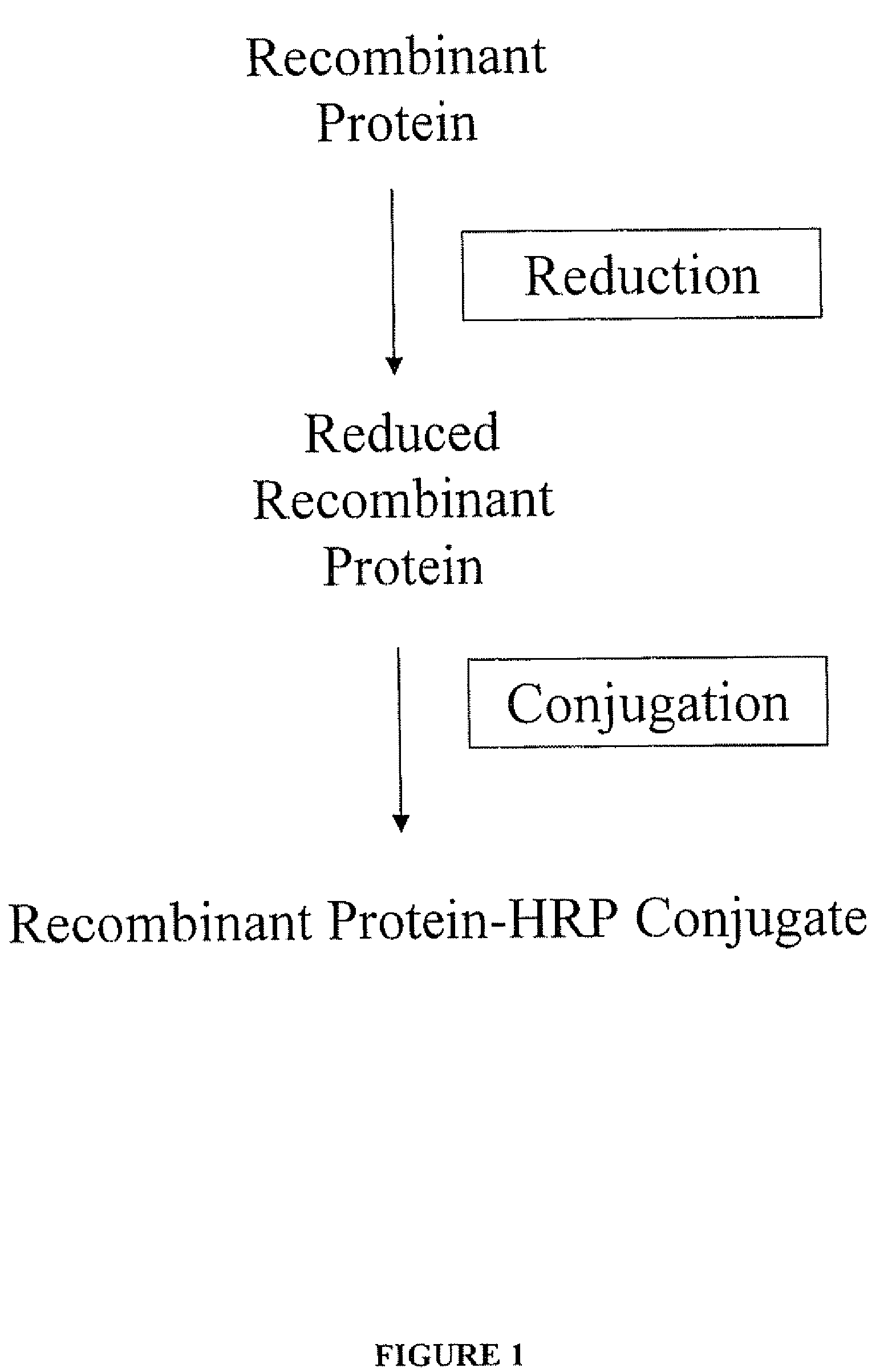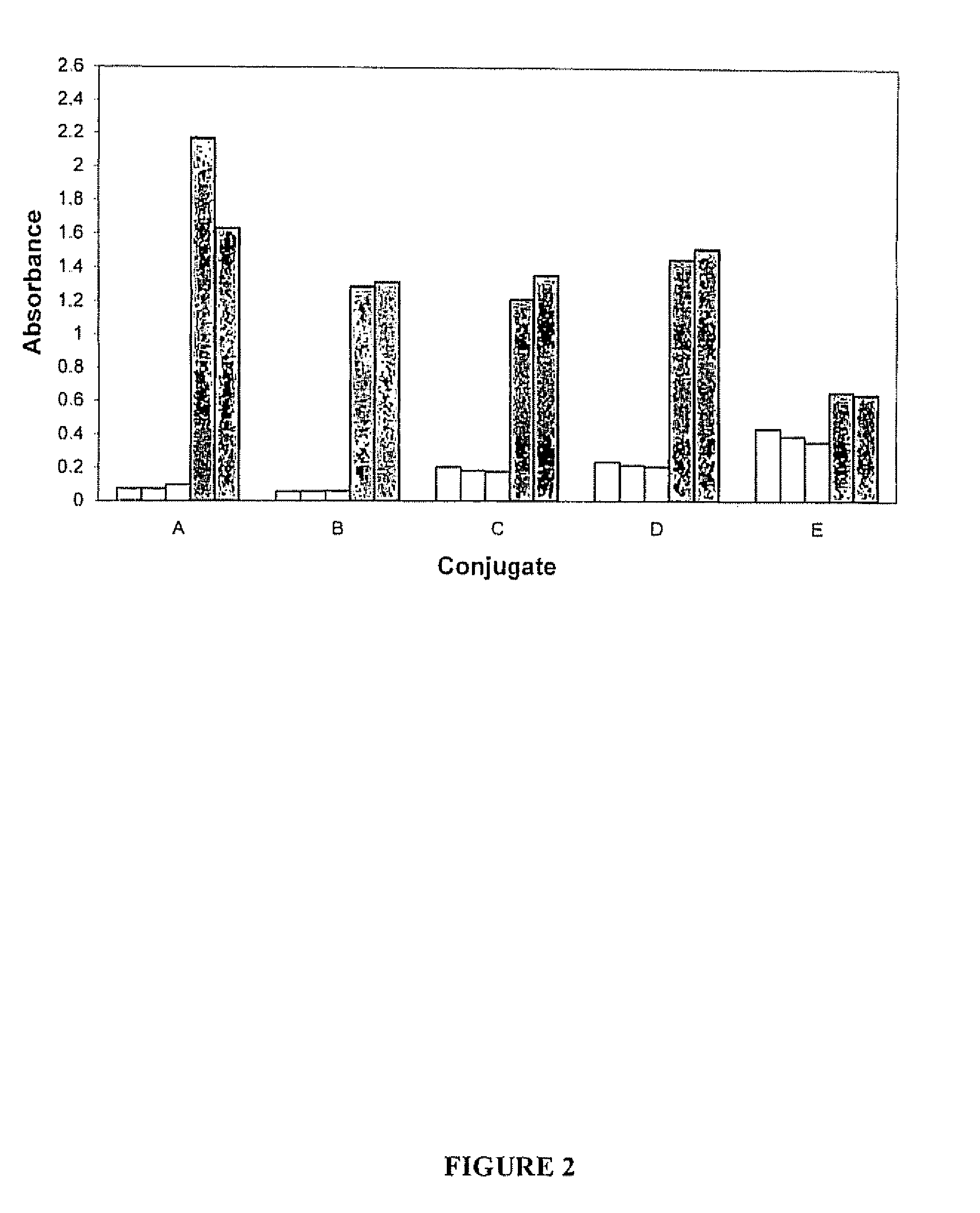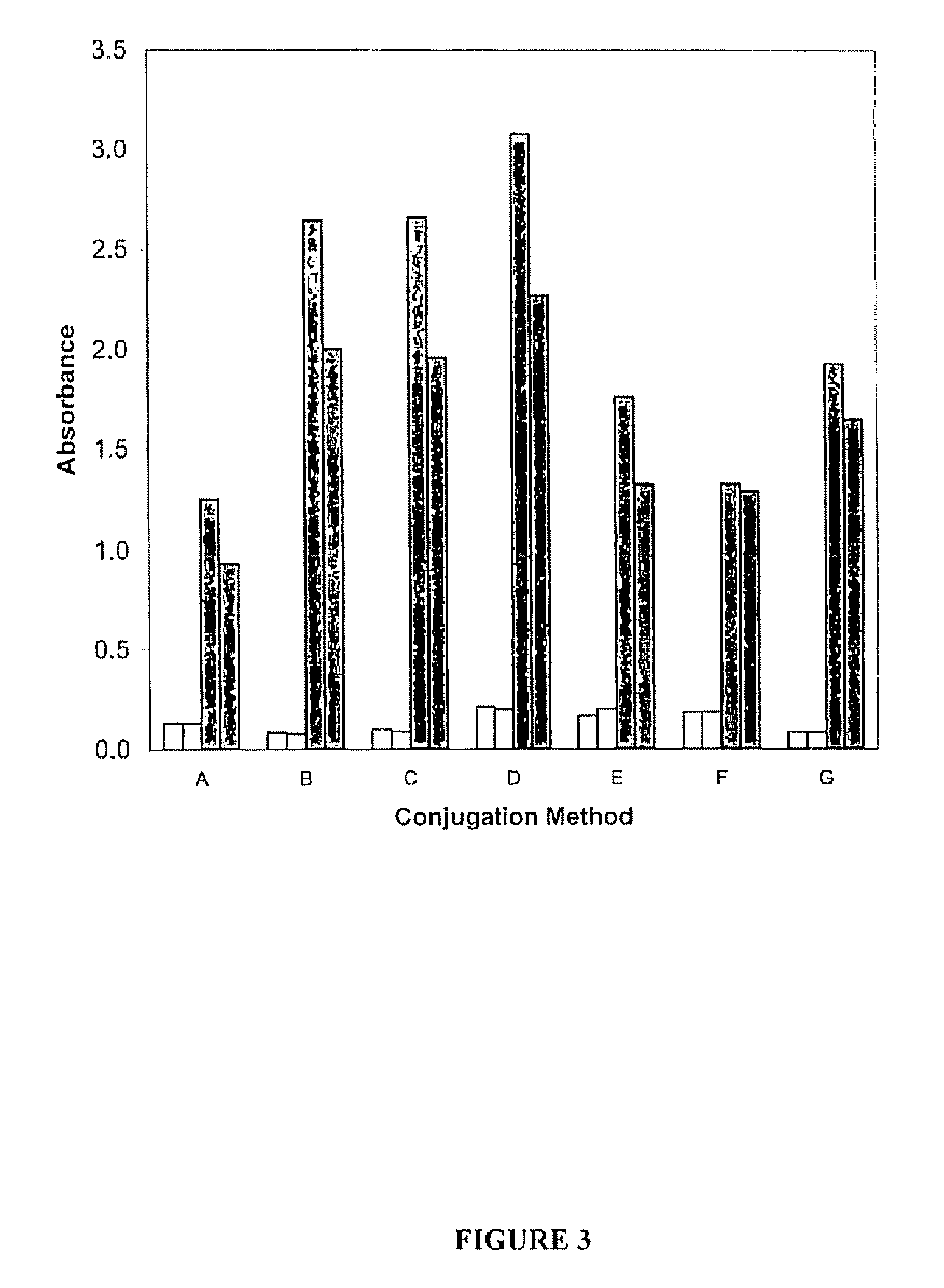Antigenic protein conjugates and process for preparing same
- Summary
- Abstract
- Description
- Claims
- Application Information
AI Technical Summary
Benefits of technology
Problems solved by technology
Method used
Image
Examples
example 1
In Situ Preparation of a Conjugate of Hepatitis C Virus NS3 Protein and Horseradish Peroxidase
[0092]A conjugate of recombinant hepatitis C virus (HCV) non-structural protein NS3 and horseradish peroxidase (HRP) was prepared as follows. The recombinant NS3 (rNS3) was prepared according to standard protein expression methods and comprised the native sequence of NS3 together with a leader sequence from the vector at a position N-terminal to the native sequence.
[0093]An HRP-maleimide solution was prepared as follows. A 2-fold molar excess of sulfo-SMCC was dissolved in DMSO (Pierce) and added to 100 mg / mL, HRP dissolved in 25 mM HEPES / 1 mM EDTA, pH 7.8. The solution was swirled gently and left for 45 minutes at room temperature. The HRP-maleimide was purified by gel filtration by loading the solution (2.5 mL) on a PD10 column (Pharmacia) and elating with 25 mM HEPES / 1 mM EDTA, pH 6.8 (3.2 mL).
[0094]The rNS3 was reduced in an aqueous solution of TCEP (Perbio or Calbiochem) containing a 1...
example 2
Preparation of a Conjugate of Hepatitis C Virus NS3 Protein and Horseradish Peroxidase by Conventional Techniques
[0095]In contrast to the in situ process described in Example 1, the most efficient prior method for preparation of rNS3-HRP conjugate required nine steps (including purification of intermediate products) and took a total time of 3 days.
[0096]Specifically, rNS3 was incubated with a final concentration of approximately 300 mM β-mercaptoethanol (β-ME). The reduced rNS3 was then loaded on a G25 Sephadex column, and eluted with 8 M urea / EDTA / 25 mM HEPES, pH 7.8 Eluted fractions were tested for the presence of protein and fractions containing the protein were then pooled. The pooled rNS3 fractions were then incubated with a 50-fold molar excess of SATA for 1 hour at 30° C. The solution was dialyzed twice in 6 M urea / EDTA / 50 mM HEPES, pH 6.8, at 2-8° C., first for 6 hours, then overnight. Incorporation of thiol groups into the protein was analyzed by standard methods.
[0097]The ...
example 3
Comparison of the Sensitivity of NS3 Protein Conjugates Prepared by In Situ and Conventional Techniques
[0098]The sensitivity of the rNS3-HRP conjugates prepared by the in situ process as described in Example 1 and by the conventional technique as described in Example 2 was compared by assessing the ability of each conjugate to detect antibodies to HCV using a positive HCV serum sample (QC1691) at various dilutions of conjugate, and determining the level of background with HCV negative samples, using an HCV immunoassay kit comprising immobilized NS3 protein. This kit is the subject of a patent application entitled “Combination Hepatitis C Virus Antigen and Antibody Detection Method”, filed Sep. 1, 2006 as U.S. Patent Application No. 60 / 841,800 (incorporated by reference for its teachings regarding same). The conjugates prepared in Examples 1 and 2 were substituted for the conjugates that are normally provided with the immunoassay kit.
The immunoassay kit included the following compone...
PUM
| Property | Measurement | Unit |
|---|---|---|
| Fraction | aaaaa | aaaaa |
| Fraction | aaaaa | aaaaa |
| Fraction | aaaaa | aaaaa |
Abstract
Description
Claims
Application Information
 Login to View More
Login to View More - R&D
- Intellectual Property
- Life Sciences
- Materials
- Tech Scout
- Unparalleled Data Quality
- Higher Quality Content
- 60% Fewer Hallucinations
Browse by: Latest US Patents, China's latest patents, Technical Efficacy Thesaurus, Application Domain, Technology Topic, Popular Technical Reports.
© 2025 PatSnap. All rights reserved.Legal|Privacy policy|Modern Slavery Act Transparency Statement|Sitemap|About US| Contact US: help@patsnap.com



